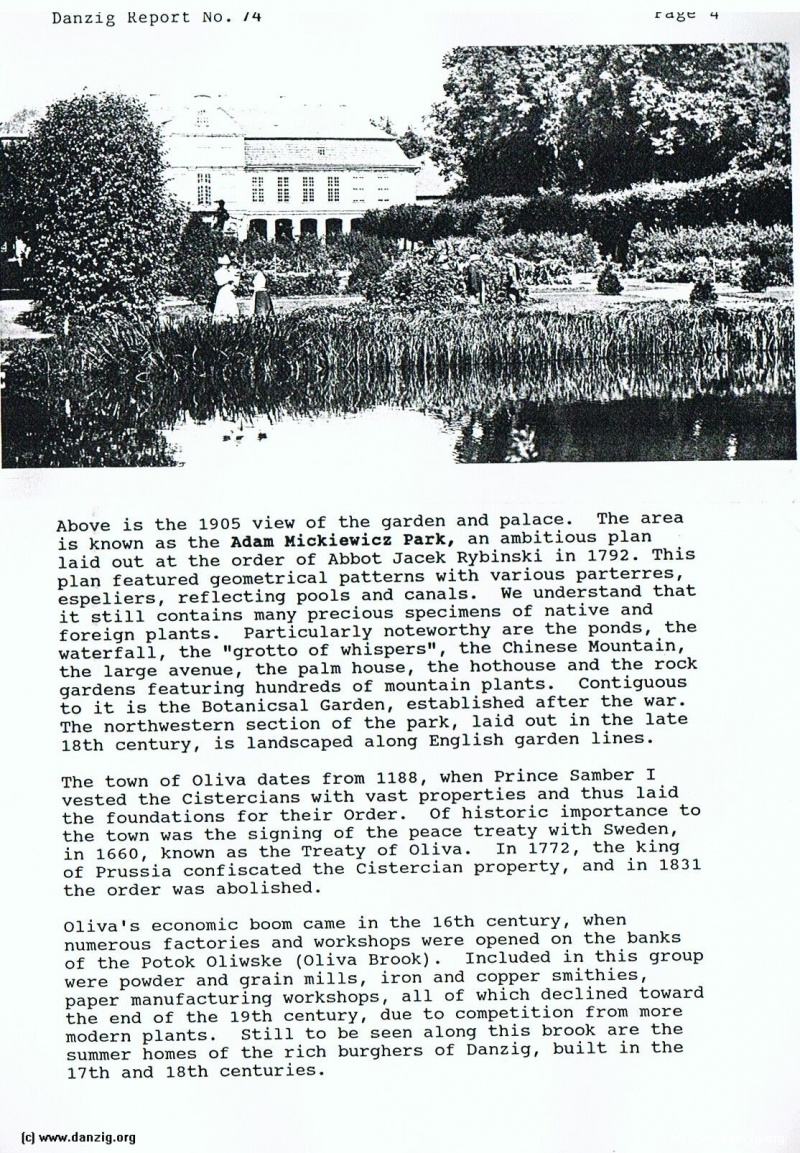
Above is the 1905 view of the garden and palace. The area is known as the Adam MickiewicZ Park, an ambitious plan laid out at the order of Abbot Jacek Rybinski in 1792. This plan featured geometrical patterns with various parterres, espeliers, reflecting pools and canals. We understand that it still contains many precious specimens of native and foreign plants. particularly noteworthy are the ponds, the waterfall, the “grotto of whispers”, the Chinese Mountain, the large avenue, the palm house, the hothouse and the rock gardens featuring hundreds of mountain plants. Contiguous to it is the Botanicsal Garden, established after the war. The northwestern section of the park, laid out in the late 18th century, is landscaped along English garden lines.
The town of Oliva dates from 1188, when Prince Samber I vested the Cistercians with vast properties and thus laid the foundations for their Order. Of historic importance to the town was the signing of the peace treaty with Sweden, in 1660, known as the Treaty of Oliva. In 1772, the king of Prussia confiscated the Cistercian property, and in 1831 the order was abolished.
Oliva’s economic boom came in the 16th century, when numerous factories and workshops were opened on the banks of the Potok Oliwske (Oliva Brook). Included in this group were powder and grain mills, iron and copper smithies, paper manufacturing workshops, all of which declined toward the end of the 19th century, due to competition from more modern plants. Still to be seen along this brook are the summer homes of the rich burghers of Danzig, built in the 17th and 18th centuries.
Danzig Report Vol. 1 - Nr. 74 - January - February - March - 1992, Page 4.
Hits: 1780
Added: 01/07/2015
Copyright: 2024 Danzig.org

